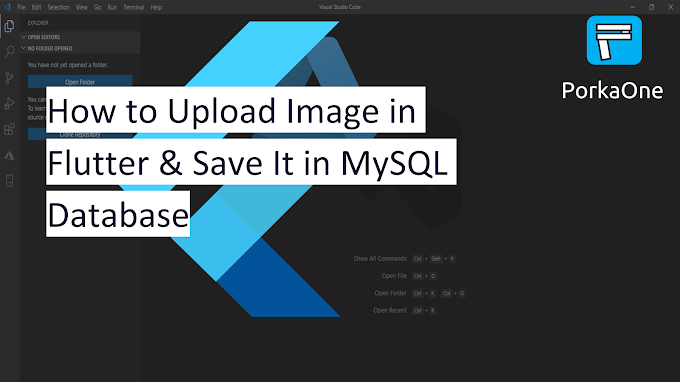Hello everyone, welcome back to porkaone. On this occasion we will learn what SDLC is, its functions, stages and an explanation of each stage. You who study IT must know this! Come on, follow the full article below.
IT lectures are not only about practice, especially in the early days of entering college. Later, you will definitely meet lots of new theories and terms that you have never heard of before, sometimes it's boring, sometimes it makes your brain hotter because the lecturer's explanation is so abstract. But those things are actually very important, namely the fundamental things that you will need later in the world of professionalism. One example is the basic stages in software development or what is called SDLC.
Definition of SDLC
SDLC(System Development Life Cycle), which is a life cycle in system development. You can also call it the system development stage. SDLC is used to develop a system to be neater, structured, documented, and as expected. SDLC has several stages including:
1. Planning (Planning)
2. Analysis (Analysis)
3. Design (Design)
4. Development
5. Testing
6. Release (Release)
7. Maintenance (Maintenance)
Some explain that the SDLC has 5 stages, others explain that the SDLC has 6 stages. In fact, everything is almost the same and true, it's just that there are stages that are combined so that they are more concise into 5 or 6 stages. If you still feel confused, please ask directly to your respective lecturers.
In the world of professionalism, this is very important to implement, let alone working with a team to build large-scale programs. If this is not implemented, it is certain that the program that is built will have problems in the middle of the road. It is very important to clearly define the stages by step, because each stage will be interrelated.

|
| SDLC Stages |
SDLC Functions
As I have alluded to above. That one of the functions of using SDLC is to make the system developed to be neater, structured, documented, and as expected.
Problems usually arise in the middle of the road, more precisely at the development or coding stage, the reason being that planning, analysis, and design are not done or done but not optimally. So that programmers will find it difficult to build application requirements for unclear requirements. So if the SDLC functions were parsed, it would be:
1. Projects are neater and more structured, because each stage is clearly defined. So that each team member knows the task they will be doing now and after.
2. The project is documented, because each stage has a special report. We call this report documentation, which documentation will be very useful for later stages.
3. The project is right on target, because it is done neatly, documented, and structured. So that each team member understands what they have to do and what goals must be achieved.
4. Projects are easier to do, because all requirements are clearly documented. Each team member understands their respective duties and does not need to look for data again to complement the data that has been collected in the previous stage.
SDLC stages
1. Planning (Planning)
At this stage you will clearly define all the resources for the project that you will work on in the future. Such as estimating cost estimates, estimated working time, selection of team members needed, technology to be used and methodology to be used. All resources must be clearly defined, because all data will be needed for the next stage.
2. Analysis (Analysis)
At this stage, the team begins to study or analyze the business problems they face, the goals and objectives of system development, and the functional and non-functional requirements of the system to be created. The team can collect data by conducting direct interviews with clients, observations, questionnaires, or studying existing references.
The final result of this stage can be in the form of a description of the problem and its solution, the objectives to be achieved, the flow of the running system, a list of application functional requirements that cover all aspects that must be carried out by the application, and a list of non-functional application requirements that are usually imported from teams such as appearance, use of concepts and technology.
3. Design (Design)
At this stage, all data at the analysis stage is poured into the form of diagrams, charts or other tools. Such as flowcharts, DFD, ERD, UML, and making the interface of the application to be built. It should be noted that maximum data collection at the analysis stage will make it easier for the team to create the required diagrams and charts.
The final result of this stage is a collection of diagrams or charts of all the functional requirements of the application in the previous stage. Diagrams or charts must be clearly defined, lest programmers have trouble reading the designs created.
4. Development
At this stage the application begins to be built according to the design description specified in the previous stage. This is the most crucial stage, because the application has begun to be built. Do not let a problem occur in the middle of the road that makes the project have to be reset. Things like this must be minimized by determining clear needs in the previous stages.
5. Testing
Applications that are built must pass the trial stage, this stage is important to do so that the application made does not contain bugs or errors. In small applications, this stage may be trivial. But for large applications this stage should not be missed.
At this stage all activities will be tested. Starting from small things to big things though, from typos in writing to procedures that can't run optimally. Like food production in a factory, the application must also go through a trial stage to be ready for use by the client.
6. Release (Release)
After the testing phase has been successfully passed, it is time for the application that you have built to be released to the client. At this stage, applications that were previously in the development environment are moved to the production environment. If you build a web-based application, the web must be accessible to the public online. If you build an android application, the apk must already be available for installation or available in official stores such as playstore. If you build a desktop application, the installer must also be available to be installed on the desktop client.
Not only releasing, at this stage you also have to prepare a complete guide to using the application with a manual book or interactive video. In fact, usually there is special training containing how to operate the application that you build.
7. Maintenance (Maintenance)
Applications are also like buildings, when the building has been completed, the building needs maintenance. When there is a leaking roof it must be repaired, when a tile is broken it must be repaired, when there is a broken glass it must be repaired. Likewise the application, the application must continue to be maintained so that its performance remains optimal. If there is a bug then it must be fixed, if there is a typo then it must be updated, if there is data that is not used then it must be deleted or moved.
The problem is that many people ignore this, especially ordinary people, they think that when the application is completed, the application can continue to be used all the time without any maintenance. Of course this is wrong, the application must also be maintained so that it continues to be optimal and can be used.
A few articles about the meaning of SDLC, its functions, and an explanation of each stage. Hopefully this article is useful. If there is something you want to discuss, please leave your message in the comments column below. See you in another exciting article.







0 Comments
Come on ask us and let's discuss together
Emoji